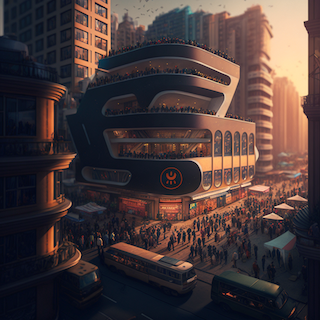China’s Immigrant Energy, Underappreciated

There is a significant parallel between China of today and the US a century ago. The parallel is this: Both US and China were/are formed and propelled by the Great Immigrant Experience.
The US’s great rise in modernity was energized by the tremendous flow of immigrants from elsewhere around the world into its coastal cities. The welcomed migrants brought cheap labor, the unstoppable ambition of very motivated people, vibrant civic urban life with new foods and customs, a diversity of backgrounds and new ideas. It also brought the problems of a clash of cultures, language, prejudices, and expectations. And immigrants came in great numbers. As the US became a nation of immigrants, this melting pot, this collider, this fusion became both the identity and the engine of the country. It is hard to imagine the superpower of the US arriving without immigration.
Now this same intense, vast energy that shaped the US, is shaping China.
But in China, this immigration is disguised because it is internal immigration. All the movement is domestic so to speak. Great oceans of migrants flow from villages at the far ends of the roads in Yunnan, Inner Mongolia, or Guizhou, and stream into the coastal cities. From the homes where they begin these migrants speak mutually unintelligible languages. The differences in native languages between Inner Mongolia and Yunnan and Guizhou is vast and incomprehensible. They would not understand each other in the cities as they move about without the interlingua of Mandarin. Further afield, migrants from Tibet and Xinjiang don’t speak any kind Chinese at all at home, and among the older people they don’t speak Mandarin at all. (My Uyghur driver in Kashgar, Xinjiang in 2016, who did not speak very good Mandarin, told me that he and his wife had decided that their kids should learn Mandarin in school. He had not.)
These immigrants are pouring into cities, thrown to work and live together with strange people with strange accents from Quinghai, Gansu, or Guizhou. Take that marvel of manufacturing, Shenzhen. It is a modern city with a stupendous opera house, magnificent libraries and museums, and 12 million in population, bigger than NYC. None of its 12 million adult inhabitants were born in Shenzhen! None are native; all 12 million are immigrants. Thirty years ago it was just a fishing village; all its current inhabitants (except for a few thousand) are migrants who have just moved there. It is a mega-city of immigrants. And youth: Shenzhen is stocked with millennials. (By age, it’s the hippest city on Earth.) All the 100 other large cities in China with over 1 million population are likewise full of internal immigrants. All the modern stuff that China creates and exports is being made by these immigrants.
The country they left behind is a land of empty villages. Some, like the cute wooden villages in Guizhou may endure as living museums, like the Cotswolds in England. Others in the arid and dusty yellow losses of Gansu, will be abandoned forever, and those places will return to the wild. The children of the hundreds of millions of internal immigrants will make this new country their home, and they in turn might move into suburbs. Right now this first generation of immigrants are forging a new culture, and new identities. And like in the US of yore, these migrants are welcome and encouraged. It would not surprise me if the percentage of immigrants in China exceeds what it was in the US during its immigrant peak.
I’ve proposed a national motto for the country: “China: Not Done Yet.” Not only are the Chinese still constructing every meter in every town and city (the whole country is a construction site), they are also constructing a new culture, much like the US did in the last century. What these half billion young immigrants are doing in the city besides working 996 is assembling a new Chinese culture, one that harnesses the energy and diversity of its far-flung migrants. The culture of China’s immigrants today is not their grandparent’s Chinese culture. It is rapidly evolving, with often new assumptions. The young can be ashamed of the things their parents and grandparents did, and vice versa. Sure technology and modernity are huge shapers, but much of what is also shaping the new culture is the cosmopolitan experience of immigrants.
Right now China has massive internal migration, but little external migration. They haven’t needed to open their national borders, but that could change in the next generation. The fertility rate of China has dropped significantly below replacement level, not helped by a reversal of their one-child policy. Just this year they officially reported more deaths than births, which means that the actual population is shrinking, not just the fertility. By the end of this century China’s population will be plunging drastically, perhaps dropping in half. They might be “only” 500 million Chinese in 2100. This drop off is not just China’s predicament. It will be common in the coming decades, however China is ahead of the curve. Like most other countries, they begin to solicit external immigration. If that days come they will need to cultivate an outwardly immigrant friendly culture to succeed in acquiring outsiders. If they used their experience with internal immigration, China could be a magnet for outside immigrants as the entire world competes for immigrants later this century.
Today China really benefits from its Great Immigrant Experience. Yes, a lot of its problems are also created by this experience, but that is always the price. Like in the US a century earlier, they gain hybrid vigor, big dreams of “anything is possible,” the cross-firing of diverse views, and the excitement of making something new and unbounded together.


